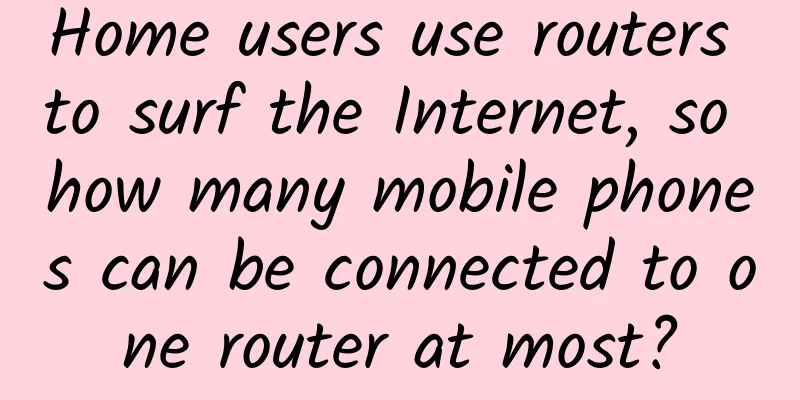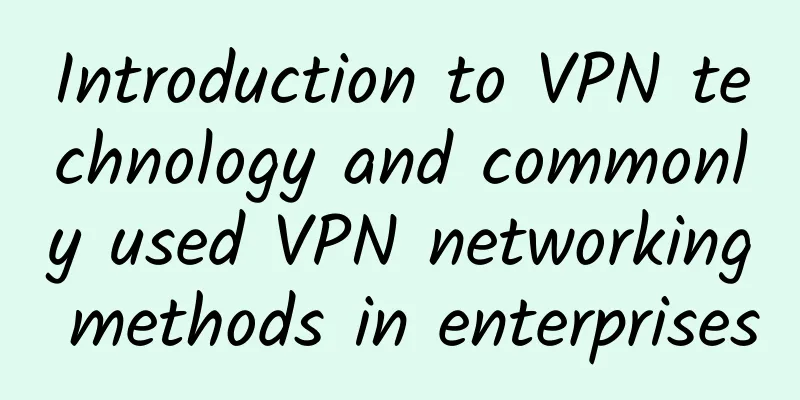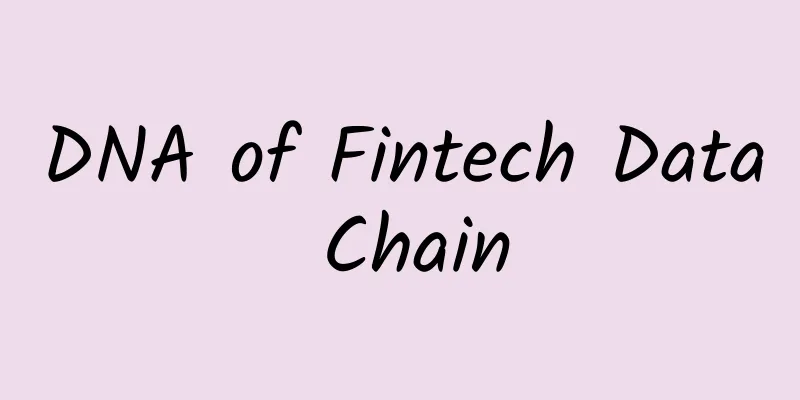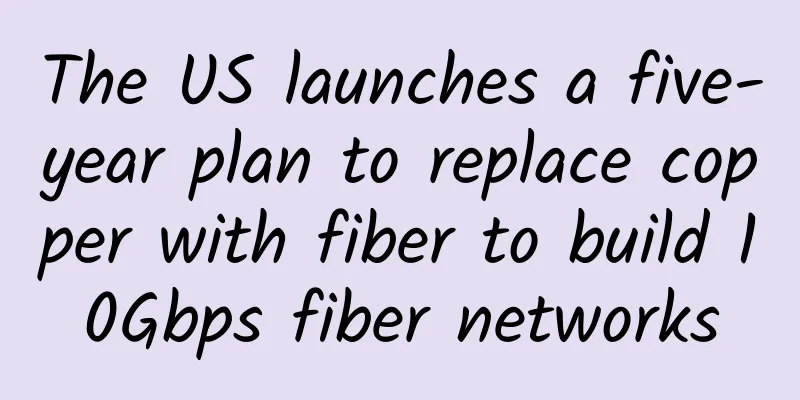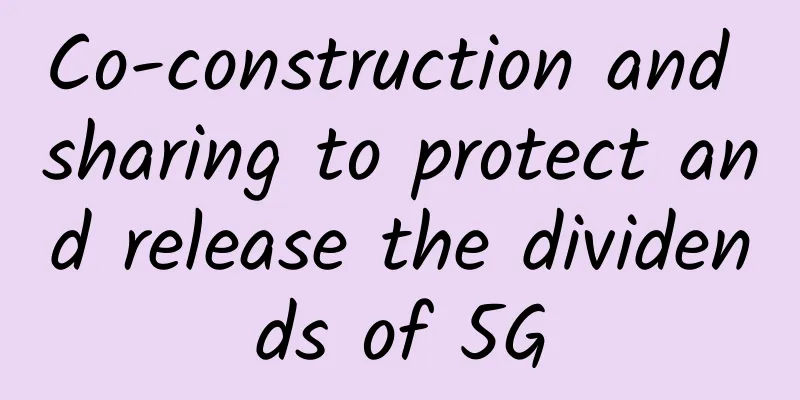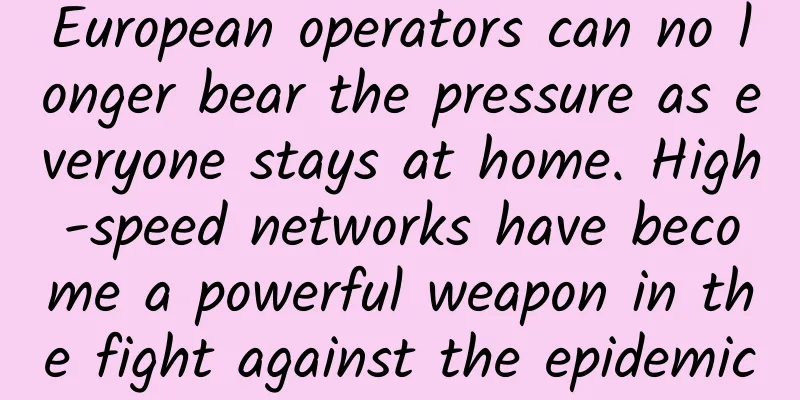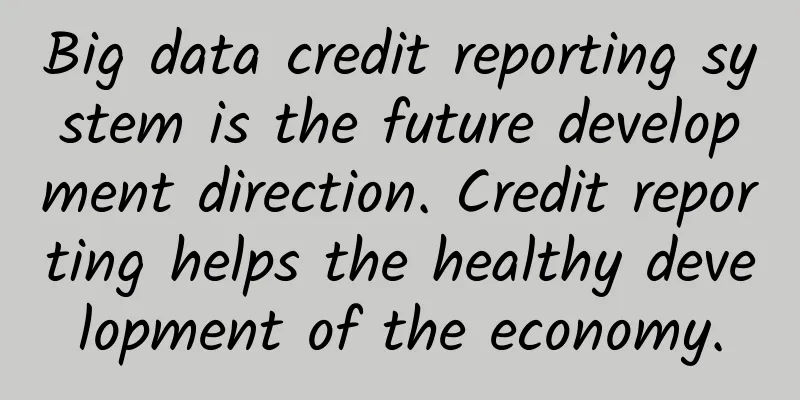Simple and clear, the most powerful introductory 5G science popularization ever!
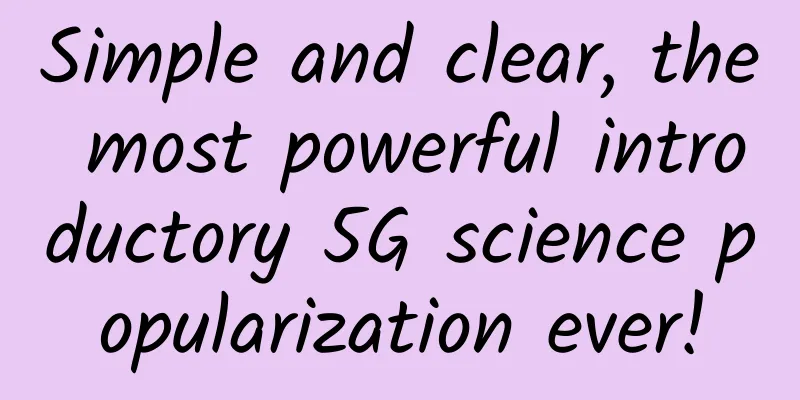
|
A simple and magical formula Today's story begins with a formula. This is a simple yet magical formula. It is simple because it has only three letters. It is magical because it contains profound secrets of communication technology, which countless people on this planet are obsessed with. This formula is it—— I believe many students have recognized this formula. If you don’t, and you are a science student, please remember to call your high school physics teacher when you have time! Xiaozaojun explains the above formula. This is a basic formula in physics: speed of light = wavelength × frequency. Regarding this formula, we can say this: no matter whether it is 1G, 2G, 3G, 4G or 5G, the essence remains the same, and all of them are based on it and no one can jump out of its "Five Finger Mountain". Let me tell you slowly... Wired? Wireless? Communication technology, no matter whether it is black technology or white technology, can ultimately be divided into two types - wired communication and wireless communication. When I call you, the information data is either transmitted in the air (invisible and intangible) or on physical objects (visible and tangible). If the communication is on physical material, it is wired communication, which basically uses copper wires, optical fibers and other cables, collectively referred to as wired media. When data is transmitted over wired media, the rate can reach very high values. Take optical fiber as an example. In the laboratory, the maximum transmission speed of a single optical fiber has reached 26Tbps. . . This is 26,000 times faster than traditional network cables. . .
optical fiber The air transmission part is the bottleneck of mobile communications. The current mainstream mobile communication standard is 4G LTE, with a theoretical rate of only 150Mbps (excluding carrier aggregation), which is completely incomparable to wired networks. Therefore, if 5G is to achieve end-to-end high speeds, the key is to break through the bottleneck of the wireless part. What a big wave As we all know, wireless communication uses electromagnetic waves for communication. Both radio waves and light waves are electromagnetic waves. The functional characteristics of electromagnetic waves are determined by their frequency. Electromagnetic waves of different frequencies have different properties and characteristics, and thus have different uses. For example, high-frequency gamma rays have great lethality and can be used to treat tumors. The constant frequency of electromagnetic waves We currently mainly use radio waves for communication. Of course, light wave communication is also on the rise, such as LiFi. LiFi (Light Fidelity), visible light communication Without getting off topic, let’s get back to the radio waves. Radio waves are a type of electromagnetic waves, and their frequency resources are limited. To avoid interference and conflict, we further divide lanes on the radio wave highway and assign them to different objects and uses. The uses of radio waves of different frequencies Please pay attention to the red font in the above picture. We have always used medium frequency ~ ultra-high frequency for mobile phone communication. For example, the often-mentioned "GSM900" and "CDMA800" actually mean GSM with an operating frequency band of 900MHz and CDMA with an operating frequency band of 800MHz. The current mainstream 4G LTE technology standards in the world belong to ultra-high frequency and ultra-high frequency. Our country mainly uses UHF: As you can see, with the development of 1G, 2G, 3G and 4G, the frequency of radio waves used is getting higher and higher. Why is this? This is mainly because the higher the frequency, the more abundant the frequency resources that can be used. The more abundant the frequency resources, the higher the transmission rate that can be achieved. Higher frequency → more resources → faster speed This should not be difficult to understand, right? Frequency resources are like carriages. The higher the frequency, the more carriages there are, and the more information can be loaded in the same amount of time. So, what are the specific frequencies used by 5G? As shown in the following figure: The frequency range of 5G is divided into two types: one is below 6GHz, which is not much different from our current 2/3/4G, and the other is much higher, above 24GHz. At present, the international community mainly uses 28 GHz for experiments (this frequency band may also become the first commercial frequency band for 5G). If calculated at 28GHz, according to the formula we mentioned above: Well, this is the first technical feature of 5G—— Millimeter wave Please allow me to post the frequency comparison table again: Please pay attention to the bottom line, isn’t it “millimeter wave”? Keep going, keep going! Well, since high frequency is so good, you must be asking: "Why didn't we use high frequency before?" The reason is simple - it's not that we don't want to use it, it's that we can't afford it. The significant characteristics of electromagnetic waves: the higher the frequency, the shorter the wavelength, the closer it is to straight-line propagation (the worse the diffraction ability). The higher the frequency, the greater the attenuation in the propagation medium. Look at the laser pen (wavelength is about 635nm), the light it emits is straight, right? If it is blocked, it can't pass through. Let’s look at satellite communications and GPS navigation (wavelength is about 1cm). If there are obstructions, there will be no signal. The big pot of the satellite must be calibrated to aim in the direction of the satellite, otherwise even a slight deviation will affect the signal quality. If mobile communications use high frequency bands, the biggest problem is that the transmission distance is greatly shortened and the coverage capability is greatly weakened. To cover the same area, the number of 5G base stations required will far exceed that of 4G. What does the number of base stations mean? Money! Investment! Cost! The lower the frequency, the cheaper the network construction and the more competitive it is. This is why China Telecom, China Mobile and China Unicom have been fighting over low-frequency bands for years. Some frequency bands are even called golden frequency bands.
This is also why, in the 5G era, operators are desperately trying to get equipment vendors to lower base station prices. (If 5G is really implemented, according to the previous model, equipment vendors will make a fortune.)
Therefore, based on the above reasons, under the premise of high frequency, in order to reduce the cost pressure of network construction, 5G must find a new way out. What are the ways out? First, there are micro base stations. Micro Base Station There are two types of base stations, micro base stations and macro base stations. As the names suggest, micro base stations are small, while macro base stations are huge! Macro base station:
Common outdoors, build one to cover a large area Micro base station:
Doesn’t it look cool?
There are smaller ones, as big as a palm. In fact, there are quite a lot of micro base stations now, especially in urban areas and indoors, where they can often be seen. In the future, when the 5G era comes, there will be more micro base stations, and they will be installed everywhere and can be seen almost everywhere. You must be wondering, will so many base stations around us have any impact on the human body? My answer is – no. In fact, contrary to traditional perception, the more base stations there are, the less radiation there is! Think about it, in winter, in a house with a group of people, is it better to have one high-power heater or several low-power heaters? High power solution▼ Low power solution▼ The above diagram is very clear. Small base stations have low power, which is good for everyone. If only one large base station is used, the radiation will be strong if it is close, and there will be no signal if it is far away, which is not good. Where did the antenna go? Have you noticed that mobile phones used to have very long antennas, and early mobile phones also had small protruding antennas? Why do our mobile phones have no antennas now? In fact, it’s not that we don’t need antennas, but that our antennas have become smaller. According to the antenna characteristics, the antenna length should be proportional to the wavelength, approximately between 1/10 and 1/4. As time goes by, the communication frequency of our mobile phones is getting higher and higher, the wavelength is getting shorter and shorter, and the antenna is getting shorter! Millimeter wave communication, the antenna also becomes millimeter-level... This means that the antenna can be completely stuffed into the phone, even multiple antennas can be stuffed in. . . This is the third killer feature of 5G—— Massive MIMO (multiple antenna technology) MIMO stands for "Multiple-Input Multiple-Output", which means multiple antennas are used for transmission and multiple antennas are used for reception. In the LTE era, we already had MIMO, but the number of antennas was not large, so it could only be said to be a basic version of MIMO. In the 5G era, MIMO technology has continued to be developed and has now become an enhanced version of Massive MIMO (Massive: large-scale, large quantities). There are many antennas stuffed into a mobile phone, not to mention base stations. In the past, base stations only had a few antennas:
In the 5G era, the number of antennas is no longer counted by the root, but by the “array”… “antenna array”… At first glance, it’s enough to give you trypophobia…
However, the distance between the antennas should not be too close. Due to antenna characteristics, multi-antenna arrays require that the distance between antennas be kept above half a wavelength. If the distance is too close, they will interfere with each other and affect signal reception and transmission. Are you straight? Or curvy? Have you ever seen a light bulb glow?
In fact, when a base station transmits a signal, it is a bit like a light bulb glowing. The signal is emitted in all directions. For light, of course, it is to illuminate the entire room. If you only want to illuminate a certain area or object, then most of the light is wasted. . .
The same goes for base stations, where a lot of energy and resources are wasted. Can we find an invisible hand to bind the scattered light? This saves energy and ensures that there is enough light in the area to be illuminated. The answer is: Yes. This is—— |
<<: Case | A sobering report on a major network failure
>>: Get WiFi signal first before enjoying the three-day New Year holiday
Recommend
The ultimate secret to speeding up WiFi is here!
[[434247]] Reasonable configuration of channel wi...
Regarding 2G network withdrawal, this article can be said to be very comprehensive
The withdrawal of 2G network is actually not a ne...
Evoxt: $2.99/month-512MB/5GB/250GB/Hong Kong & Malaysia & Germany & UK & US data centers
This is the first time that Evoxt has been shared...
Mathematical formula could help 5G networks share communication frequencies efficiently
Researchers at the National Institute of Standard...
5G services market expected to exceed $919.4 billion by 2031
According to a recent report by Transparency Mark...
An introduction to different types of edge computers
Before buying edge computer hardware, we must fir...
Say goodbye gracefully - TCP protocol waves four times
Say goodbye gracefully Leaving without saying goo...
In the 5G era, how can telecom operators lead the future through IoT services?
Major global telecom operators have been explorin...
Let's talk about HTTP/3, QUIC, how do they work?
Why do we need HTTP/3? One important reason is to...
China's three major operators finally gave in, reducing 5G package fees, netizens: Still can't afford it
As we all know, since the end of 2018, countries ...
DogYun Spring Festival discount: 30% off on Dynamic Cloud, 20% off on Classic Cloud, save 100 yuan per month on dedicated servers, and get 10 yuan for every 100 yuan you top up
The traditional Lunar New Year is approaching, an...
Should you upgrade your 5G package? Read this article before deciding
Recently, I often receive such calls on my two mo...
"Connecting Everything with Light, Sense the Extraordinary" Huawei held a seminar for core partners of industry perception distribution
On May 10, Huawei's Industry Perception Distr...
